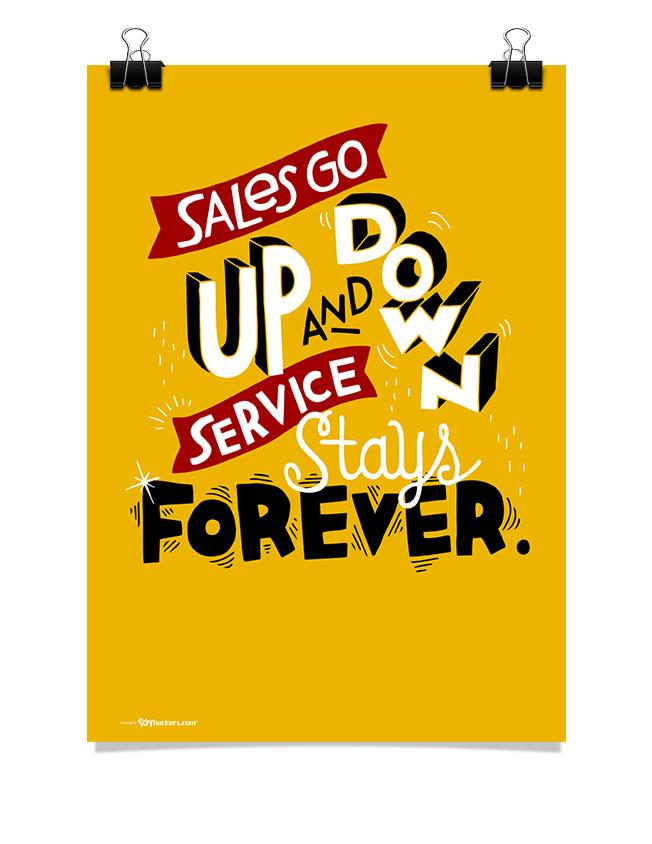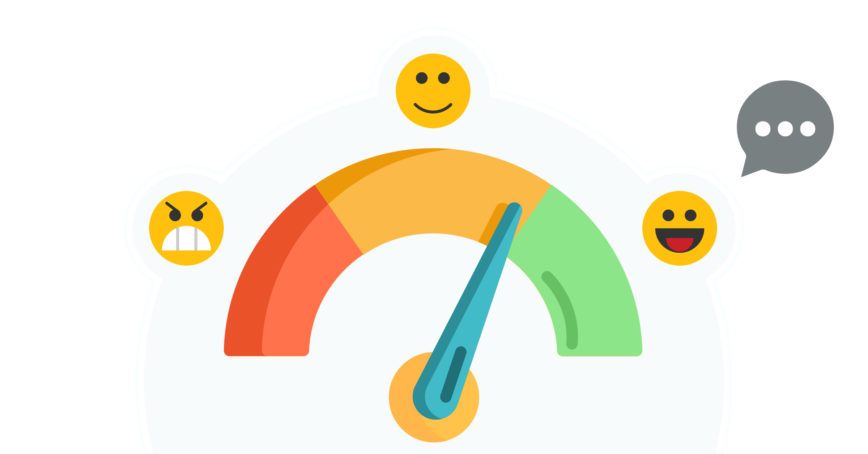SHOULD YOU LOWER YOUR PRICES IN YOUR AUTO REPAIR SHOP?
Posted by Juan E. Chavez on 26th Jun 2019
Every auto repair shop can expect slow periods now and then, especially in a slow economy. When this happens—particularly when it drags on—a lot of shops might be tempted to lower their prices in an effort to bring in more business. There may be reasons to lower your prices in some circumstances, but generally it’s a bad idea, as we’ll see below.
Are Your Prices Too High?
As it turns out, about the only time it makes sense to lower prices is if your prices are out of line with going market rates. If you’ve set your prices too high, your average ticket may increase, but your overall revenue is going to drop off as customers defect for more moderately priced repair shops. Is your shop just not as busy as it used to be after an increase in prices? Do the math.

Another sign that your prices are too high may take the form of a low conversion rate. If you’re getting a lot of calls looking for estimates on repair jobs, but few actual customers through the door, your prices might just be too high. Some customers will make the decision about which repair shop to take their business to based on price alone, which is oftentimes the only information they’ll ask when they’re on the phone. But a customer on the phone is practically a closed sale—if your prices are right.
Too few conversions could indicate a problem in your pricing, so maybe there’s something you’re missing. Don’t be afraid to engage your customers. “We can usually do that job for this much—but what kind of prices are you getting from other places?” This can be a handy way to learn if your prices are out of line—and give you the opportunity to meet a competitor’s price, keep the sale, and win a customer.
There’s nothing wrong with a little research, either—your competitors’ prices are likely to be published information, or you could call and ask for a ballpark estimate on a common repair or two to see how your prices compare. If you’re way out of line with pricing, it’s going to be unattractive and off-putting to customers.
But don’t be in too much of a hurry to exactly match a competitor’s prices. If your shop is a few dollars more expensive—but not wildly so—customers may perceive that as indicative of higher quality service.
When Pricing Isn’t the Problem
 But if your prices are in line with the competition, you’ve
got good customer service, and you’ve done a reasonable amount of marketing for
an auto repair shop, you’ve probably just seen a falloff in sales due to larger
economic uncertainties—a slump.
But if your prices are in line with the competition, you’ve
got good customer service, and you’ve done a reasonable amount of marketing for
an auto repair shop, you’ve probably just seen a falloff in sales due to larger
economic uncertainties—a slump.
And if it’s a long slump, some shop owners might be tempted to lower prices in an effort to attract more customers and drive more sales. But carefully consider the options and the outcomes, here—you might be surprised by the actual effects lowering prices can have.
Should You Lower Prices?
During a particularly bad business drought, you’ll try almost anything to get customers coming into your shop. You might be thinking that lowering prices might make you a more attractive option than your competitors. Wouldn’t it make sense that low prices would be the best way to keep current customers, gain new customers from your competitors, and increase your shop’s revenue? It turns out that nothing could be further from the truth. There are problems to this approach, which we’ll look at below.
Tangible Costs
Before we go into the less tangible examples, let’s talk bottom line. Though your sales may go up, your revenue may not. Say for the sake of argument that you have a service that you charge $100 for, but which costs you (considering parts, labor, overhead, taxes, and the rest of it) $80.00 to provide.
If you cut your price by 10%—just lower it to $90—but your cost doesn’t change, that cuts your profit margin in half. You were making $20 in profit each time you sold that service, but after offering only a 10% decrease in prices, you’re making $10 less—half of your previous profit—on each sale. Now you’re (maybe) doing more work, but earning less money per job—50% less. And all for a discount that many consumers are going to see as “only” 10%, which simply isn’t that impressive to most people.
In a service-oriented and time-intensive business like auto repair, high volume, low ticket pricing models are not effective or advantageous to any but a few specialty shops that specialize only in oil changes or some similar service that could be turned around quickly. But for anything other than the most basic, routine service, you simply can’t have a mechanic trying to beat the clock and still expect them to do quality work.
Repair jobs take as long as they take, and this is where the “low price, high volume” model falls apart for auto repair shops—mechanics can only work so quickly and still do thorough, competent, and above all safe work. There are some jobs that you don’t want to rush.
Since a strategy relying on a price decrease requires a disproportionally larger increase in volume to make up the initial difference in lost revenue, this is an ill-advised move for most auto repair shops from just looking at the basic accounting principles.
And always consider what a price decrease does to your bottom line—your cost isn’t going to change, so the only room to reflect that lowered price is in your (often dramatically) lowered profit margin. In the short term, especially in a sluggish or retracted economy, it’s guaranteed to mean decreased profits and perhaps little else.
Intangible Costs
Then there are costs that aren’t as 2+2=4. Intangible costs, like how your product is perceived by the community you’re trying to serve, can be the most expensive of all.
There’s a reason the phrase “cut-rate” has negative connotations. Cut-rate goods and services are almost never seen as being of the same quality as similar goods and services sold at a higher (more “regular”) price. If goods and services are sold at a discount, the thinking goes, they must be inferior.
 Even if it isn’t true, the public perception is often that
cheap work is usually shoddy, of poor quality, and unreliable. A business that
heavily emphasized bargain basement pricing would likely have challenges in
terms of establishing or maintaining a positive reputation for the perceived
quality of their goods, services, reliability, and/or overall customer
satisfaction.
Even if it isn’t true, the public perception is often that
cheap work is usually shoddy, of poor quality, and unreliable. A business that
heavily emphasized bargain basement pricing would likely have challenges in
terms of establishing or maintaining a positive reputation for the perceived
quality of their goods, services, reliability, and/or overall customer
satisfaction.
Due to this perception, when an established business (perhaps especially one like an auto repair shop) cuts its prices, it tends to negatively affect public perception of the quality of that business’s products, services, and ultimately of the business or brand in general. The idea that “you get what you pay for” cuts both ways, and with some things—like auto repair—educated car owners would rather pay for what they get.
Little Apparent Gain in Price-Cutting, Several Apparent Risks
 You also run the risk of alienating existing customers who
have been happily paying your shop’s “regular” rates the entire time they’ve
done business with you. If you suddenly cut prices, they may feel as if they’ve
been overcharged in the past, and you will probably lose some customers as a
result.
You also run the risk of alienating existing customers who
have been happily paying your shop’s “regular” rates the entire time they’ve
done business with you. If you suddenly cut prices, they may feel as if they’ve
been overcharged in the past, and you will probably lose some customers as a
result.
Customers are also likely to leave in reaction to the perceived decrease in quality of your goods and services associated with the decrease in prices. It is unlikely that any increase in the number of new customers would offset losses incurred by losing numbers from your existing customer base.
Another serious factor to consider is that if you have stiff competition, your competition may just match your prices. This won’t help you gain new customers—in fact, if a competitor responds to a price reduction with a price matching policy, both shops have lost revenue for no gain. Starting a price war is a dangerous maneuver.
And one more thing to think about—once you lower a price, it’s difficult to get a customer to be anything but irritated if that price goes back up for any reason. Perceived value can decrease quickly, but takes much longer to increase.
Price Influences the Perception of Value
 The amount a person feels comfortable paying for a product
or a service varies depending on many different factors. Consumers may feel
more comfortable going with an auto repair shop that charges reasonable, fair
prices than with an auto repair shop that charges bottom dollar. Most people
feel, fairly or not, that significantly cheaper usually means significantly
lower quality. Especially for a knowledge-based, service-oriented business like
automotive repair, most people would feel more comfortable paying higher prices
for things like experienced mechanics and superior customer service.
The amount a person feels comfortable paying for a product
or a service varies depending on many different factors. Consumers may feel
more comfortable going with an auto repair shop that charges reasonable, fair
prices than with an auto repair shop that charges bottom dollar. Most people
feel, fairly or not, that significantly cheaper usually means significantly
lower quality. Especially for a knowledge-based, service-oriented business like
automotive repair, most people would feel more comfortable paying higher prices
for things like experienced mechanics and superior customer service.
Price Helps Determine Customer Goals
It helps to think of your ideal customer and your ideal transaction. Different consumers are drawn to different features of a business or its offerings. How a business positions itself in terms of showcasing its main benefits can greatly influence the kind of consumer that business attracts.
Discount-Motivated Consumers
Consumers who are drawn to bargain prices are discount-motivated, and seek out the absolute cheapest auto repair shop they can find, regardless of other factors. They typically do not buy add-on services like routine or preventative maintenance, and are the least likely to invest proactively in their vehicles.
Discount-motivated customers want the cheapest prices they can find and have little loyalty to a brand or specific business. Though these may be excellent customers for certain kinds of high-volume businesses, they are poor customers for automotive repair shops—at least ones that do quality work. Discount-motivated customers tend to want cheap, fast service with no frills and little follow-up, which they will tend to view with suspicion.
Another factor to consider is one of reputation. Businesses—maybe especially auto repair shops—that offer cut-rate prices are seen as doing sub-standard work and are perceived as being less honest, even by their own customers. Regardless of the actual quality, “bargain” or heavily discounted goods and services will almost always be seen as lower quality, and a business or brand known to cater to bargain hunter consumers is assumed to be offering a product inferior in quality than that offered by their “regularly priced” competitors. It can be difficult to shake this perception once it has become established.
Value-motivated Consumers
Customers primarily motivated by factors like quality of product, quality of service, or overall value were more likely to be comfortable paying higher prices for goods and services they perceived to be of higher quality. This type of customer is also more likely to see the value in proactive and preventative maintenance, is typically more interested in optional services or products, and is much more likely to upgrade to higher-quality brands when the choice is available.
Value-motivated customers tend to build loyalty in a handful of brands over time, and tend to stay with their favorite businesses. They are much more likely to make word of mouth recommendations. They do tend to avoid discount or cut-rate businesses, again due to the perception that the goods and services they offer are of inferior quality.
Pricing for the Customer You Wish to Attract
We’ve seen the damaging effects that lowering your prices can cause, and identified some upsides of leaving fair, market-value prices un-altered. When thinking about your pricing policies and how you might include them in marketing efforts or just your shop’s philosophy, it’s good to remember that different pricing models appeal to different customers, and you have a lot of control there.
Decide what kind of customer you want to attract and then find out what appeals to them. If your goal is to increase revenue, you would probably be better off going after that mid- to upper-range customer who invests in their vehicle and doesn’t mind paying a little more for added value.
INSTAGRAM:@jmcautoequipment
FACEBOOK: JMC Automotive Equipment.
LINKED IN: JMC Automotive Equipment.


